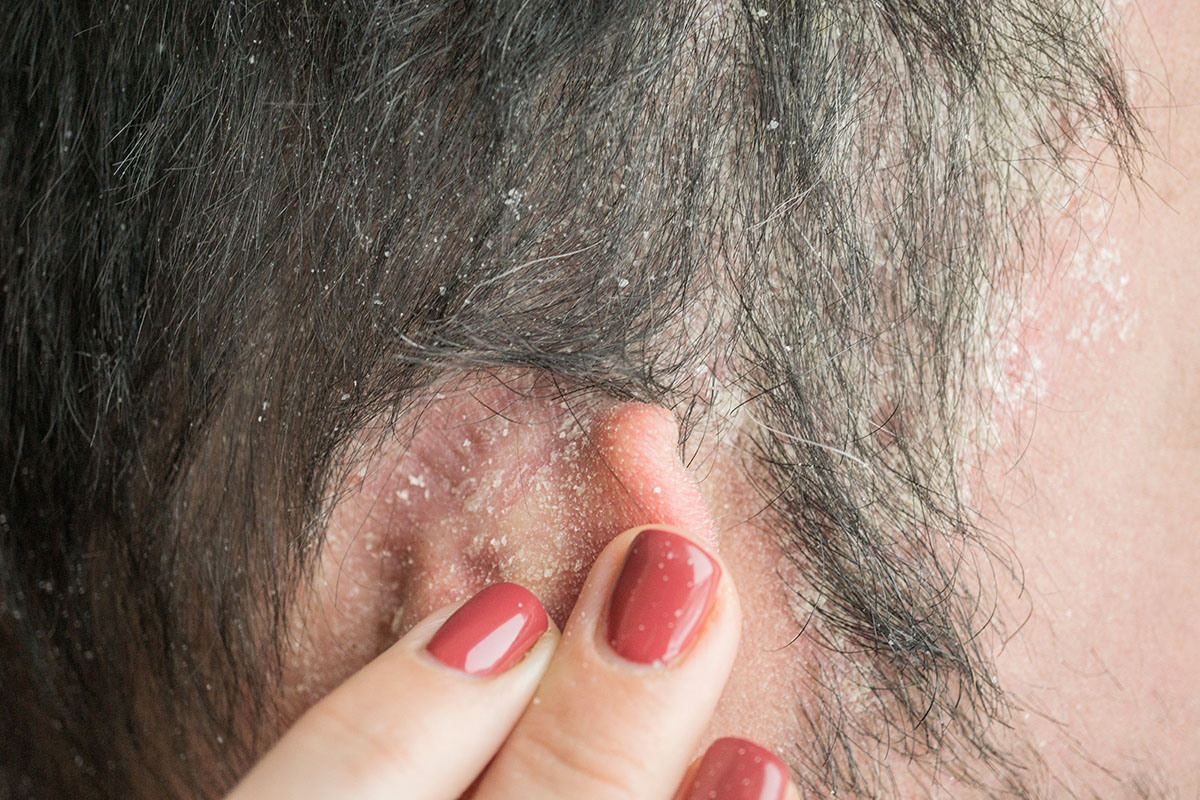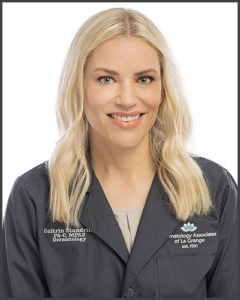Seborrheic Dermatitis: What to Know About Dry, Flaky, Itchy Skin

Have you ever suffered from an itchy scalp? Maybe it’s flaky, with dry patches that dust your hair in an annoying layer.
This may be uncomfortable and quite irritating, and it’s a condition called seborrheic dermatitis. Luckily, you can treat it with the right help.
What is Seborrheic Dermatitis?
Seborrheic Dermatitis is a very common chronic inflammatory rash, typically on the scalp, that tends to worsen during winter months and improve during summer months.
What does Seborrheic Dermatitis look like?
This skin condition’s appearance can vary from person to person depending on your skin type.
“There are varied presentations of Seborrheic Dermatitis, ranging from mild flaking (or dandruff), to a red scaly rash in lighter skin phototypes, to a lighter or darker pigmented scaly rash in darker skin phototypes, to a thickened greasy yellow rash.”
Changes in pigment may also persist after the rash resolves.
Where on the body does Seborrheic Dermatitis occur?
It typically presents on areas of the body with increased sebum, or oil, production.
“The most common sites include the scalp, ears, and face, particularly the eyebrows, beard area if facial hair is present, glabella, and areas around the nose.”
You may also find seborrheic dermatitis present on the neck, upper chest, body folds, and back may also be affected. The distribution is typically symmetrical.

Who gets Seborrheic Dermatitis?
Seborrheic dermatitis affects approximately 5% of adults after puberty and is most common after age 50-60. The condition can also affect infants, often referred to as “cradle cap”.
However, anyone can suffer from seborrheic dermatitis, and it’s not exclusive to the groups mentioned above.
What causes Seborrheic Dermatitis?
This is a difficult question to answer. While modern medicine has come a long way, we don’t know the certain answers for everything. That being said, we can determine a few reasons you may suffer from seborrheic dermatitis.
It is thought to be related to an abnormal immune response to a common yeast, Pityrosporum (Malassezia), that is present on our skin.
Seborrheic dermatitis in infants is most likely triggered by persistent maternal androgens, or hormones. It is possible that stress causes the condition to flare or worsen.
Ultimately, the cause of seborrheic dermatitis may differ from person to person, along with the severity of its effects.
What are the symptoms of Seborrheic Dermatitis?
The condition may be asymptomatic, itchy, or have a burning sensation. In more extensive cases, the rash may be severely itchy.
You may also expect some flakes, like dandruff, to come off while itching and be present on the skin and hair.
Is there a cure for Seborrheic Dermatitis?
There is no “cure” for seborrheic dermatitis, as the condition can come and go. It can be managed with medications to both prevent the recurrence of the rash and to treat active flares.
How do you treat Seborrheic Dermatitis?
Thankfully, there are a few treatment options to manage seborrheic dermatitis.
Shampoos containing ketoconazole, selenium sulfide, zinc, or salicylic acid can help improve the condition. Thickened areas on the scalp can be treated with an oil-based topical agent to help loosen the scale. Topical steroids are often utilized for more severe cases.
Sometimes, prescription shampoos and creams are needed to control more severe or persistent flares.
If you’re struggling with seborrheic dermatitis and want some help, book an appointment with us today, and let’s get you on a treatment path as soon as we can.

Caitrin is a Board-Certified Physician Assistant in Dermatology. She completed her undergraduate studies at the University of California Santa Barbara, earning a Bachelor of Science in Mechanical Engineering. Caitrin then attended graduate school and received her Masters of Science in Physician Assistant Studies from Concordia University of Wisconsin. Prior to joining our practice, she worked as a Board Certified Physician Assistant in Dermatology at a private practice in downtown Chicago and the northwest suburbs. Caitrin is trained in cosmetic, medical, and surgical dermatology, and manages a full spectrum of dermatologic conditions.

